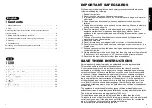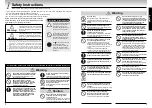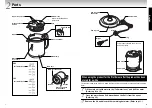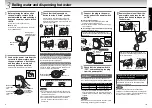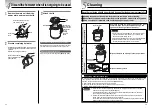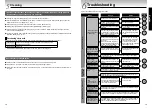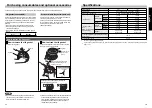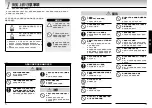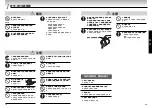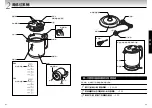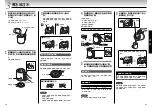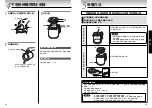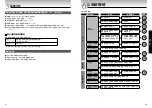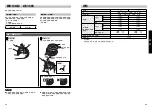
13
14
English
Put approx. 30g (2-3 tablespoons) of citric acid into the inner container.
Pour cold water up to the “full water level” and mix it with the citric acid, and attach the lid. (Do not pour hot
water into the main unit.) (Refer to p.7 to 9.)
Connect the plug, boil water, and leave it for about 2 hours. (Refer to p.10.)
Unplug the plug and remove the lid, and then discard water. (Refer to p.11.)
If stains remain, scrub them off with a sponge. (In case of stubborn stains, repeat the cleaning procedure
with the citric acid and water.)
In order to rinse the inner container and spout, boil only water as usual, and discard hot water with the lid still
attached. (Refer to p.9. to 10.)
Purchasing citric acid
Citric acid can be purchased from the Tiger product retailer where you purchased the product.
Product name
Citric acid for cleaning the inner container of the electric kettle
(approx. 30 g x 4 packs)
Model number
PKS-0120
∗
Citric acid is a food additive, and causes no harm in terms of food hygiene.
6
Troubleshooting
5
Cleaning
If the inner container has a noticeable odor, stains or mineral buildup, clean it using citric acid.
(At a frequency of about once every 1 to 3 months)
If not using for a prolonged period
When
Check
Action
Reference
page
W
h
en
b
o
iling
wat
e
r
Water does not boil.
(The boil lamp does
not illuminate.)
Is the power cord connected?
Connect the power plug.
10
Is the main unit positioned prop-
erly on the power plate?
Position it properly.
9
Is the power switch at the “OFF”
position?
Set the power switch to the
“ON” position.
10
Are there any metal fragments
or dirt on the top surface of the
power plate or in the connecting
area of the power plate?
Unplug the plug, and then
remove the metal fragments
or dirt.
4
Is the power switch set to “ON”
while there is no water inside the
main unit?
When the function to prevent
accidental boiling without water
in the main unit is performed, the
power switch is set to “OFF”.
Remove the main unit from
the power plate, wait for the
inner container to cool off
suf
fi
ciently, pour in some
water, attach the lid, and start
the boiling process.
10
Hot water comes out
from the spout and
steam vent of its own
accord.
Is water poured into the main
unit above the “full water level”?
Reduce the water below the
“full water level”.
7•8•9
A "bubbling" sound is
heard.
The "bubbling" sound is generated by the bursting of air bubbles
while boiling water.
The "bubbling"
sound seems to be
louder than usual.
The sound becomes louder es-
pecially when the inner container
is dirty.
Clean the inner container us-
ing citric acid.
13
The water keeps on
boiling.
Is the dispense lock button in the
pressed-down position?
Set the dispense lock button
to the “locked” status.
9
Th
e hot
wa
te
r
has
an
odor
The hot water
smells.
Depending on the amount of disinfectant chlorine in the tap water,
the chlorine smell may remain.
Although resin and other materials may smell for the
fi
rst several
times, they become less noticeable with use.
Pr
o
b
le
m
s w
it
h
t
h
e m
a
in
u
n
it
The inner container
is dirty.
White material is
fl
oating in the hot
water.
This is due to the action of the
minerals contained in water: It is
not the discoloration or corrosion
of the inner container itself.
Clean the inner container
using citric acid.
13
Some lines and
waves appear in the
plastic area.
These traces occurred during molding and do not affect the proper
functioning of the product.
Sounds are sometimes
heard for some moments
after use.
These sounds are heard when the heated parts are cooling down,
so there are no problems with the main unit's operational quality.
Water droplets are
dripping from the vent
on the base of the
handle.
The product is designed so that the power turns off when steam is
detected. Steam may exit as water droplets from the vent on the
base of the handle, but this not a malfunction.
Clean each part in accordance with the directions on p.12, and wipe with a dry cloth.
Dry each part. (The inner container must particularly be thoroughly dried.)
Store the product by tightly sealing it in a plastic bag, etc., so that insects, dust and other foreign objects will
not get in.
Check the following before asking for a repair.


